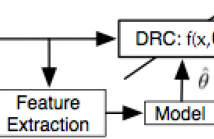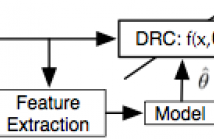- Transducers
- Spatial and Multichannel Audio
- Source Separation and Signal Enhancement
- Room Acoustics and Acoustic System Modeling
- Network Audio
- Audio for Multimedia
- Audio Processing Systems
- Audio Coding
- Audio Analysis and Synthesis
- Active Noise Control
- Auditory Modeling and Hearing Aids
- Bioacoustics and Medical Acoustics
- Music Signal Processing
- Loudspeaker and Microphone Array Signal Processing
- Echo Cancellation
- Content-Based Audio Processing

- Read more about FEATURE DESIGN USING AUDIO DECOMPOSITION FOR INTELLIGENT CONTROL OF THE DYNAMIC RANGE COMPRESSOR
- Log in to post comments
This paper proposes a method of controlling the dynamic range compressor using sound examples. Our earlier work showed the effectiveness of random forest regression to map acoustic features to effect control parameters. We extend this work to address the challenging task of extracting relevant features when audio events overlap. We assess differ- ent audio decomposition approaches such as onset event detection, NMF, and transient/stationary audio separation using ISTA and compare feature extraction strategies for each case.
- Categories:
 5 Views
5 Views
- Read more about FEATURE DESIGN USING AUDIO DECOMPOSITION FOR INTELLIGENT CONTROL OF THE DYNAMIC RANGE COMPRESSOR
- Log in to post comments
This paper proposes a method of controlling the dynamic range compressor using sound examples. Our earlier work showed the effectiveness of random forest regression to map acoustic features to effect control parameters. We extend this work to address the challenging task of extracting relevant features when audio events overlap. We assess differ- ent audio decomposition approaches such as onset event detection, NMF, and transient/stationary audio separation using ISTA and compare feature extraction strategies for each case.
- Categories:
 1 Views
1 Views
- Read more about FEATURE DESIGN USING AUDIO DECOMPOSITION FOR INTELLIGENT CONTROL OF THE DYNAMIC RANGE COMPRESSOR
- Log in to post comments
This paper proposes a method of controlling the dynamic range compressor using sound examples. Our earlier work showed the effectiveness of random forest regression to map acoustic features to effect control parameters. We extend this work to address the challenging task of extracting relevant features when audio events overlap. We assess differ- ent audio decomposition approaches such as onset event detection, NMF, and transient/stationary audio separation using ISTA and compare feature extraction strategies for each case.
- Categories:
 5 Views
5 Views
- Read more about Binaural Speech Source Localization using template matching of interaural time difference patterns
- Log in to post comments
- Categories:
 13 Views
13 Views
- Categories:
 43 Views
43 Views
- Categories:
 37 Views
37 Views
- Read more about Linear classification in speech-based objective differential diagnosis of Parkinsonism
- Log in to post comments
- Categories:
 13 Views
13 Views
- Read more about Deep Geometric Matrix Completion
- Log in to post comments
ICASSP.pdf
- Categories:
 104 Views
104 Views
- Read more about A Joint Perspective of Periodically Excited Efficient NLMS Algorithm and Inverse Cyclic Convolution
- Log in to post comments
- Categories:
 11 Views
11 Views